From the moment you start your journey in Hellblade: Senua’s Sacrifice, you are in for a wild ride. This game deals with psychosis as one of its themes — and warns you beforehand so you’re prepared for the headspace you’re going to enter. The opening was chilling and does a great job at setting the tone for the rest of the game.
Hellblade: Senua’s Sacrifice combines a unique mental mechanic and an ambient experience with punishing gameplay that forces you to use your (messed-up) head. But there are also some mechanical issues and a seemingly empty threat of permadeath that put a slight damper on this strange experience.
The Good Stuff
The game’s theme of psychosis is one of my favorite things about it. Ninja Theory consulted specialists to properly replicate the experience of a person who experiences this mental phenomenon, and the extra effort shows as you go through the game. They recommend playing with headphones to get the full effect — which definitely brings the game to a new level.
I would not suggest doing this if you scare easily, or don’t want the chance of going crazy yourself. The voices are constantly there, and they come from every direction. (But in a fun little twist, they’re occasionally helpful and try to point you toward the right direction in lieu of a map, objectives, or any other helpful UI info.)
Note: This game could be a trigger for those that have mental illness or experienced anything shown in the game. So be aware of that before you boot it up.
Game Mechanics and Combat
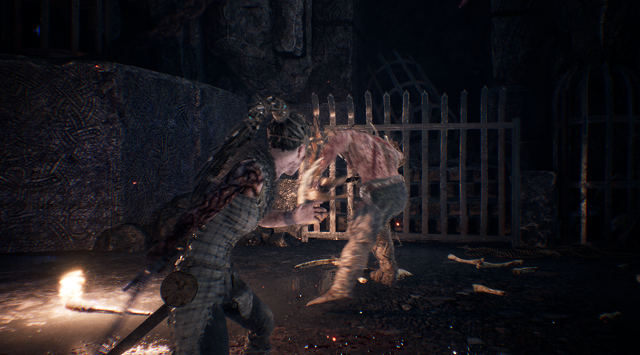
The game does a great job at seamlessly pulling you into the world. There is no HUD, inventory, quests, objective markers, or anything like that — just a pause menu that lets you adjust settings.
I have to commend this game for being so entertaining with such a minimalist approach to UI and mechanics. In fact, I got halfway through the experience before I actually realized there was no UI or inventory.
Doing something like this is risky, but the game pulls it off flawlessly. The first battle you get put in gives you an idea of how combat will work, and the way everything flows it just feels natural. The game does not tell you how to fight, though, so make sure you look at the controls beforehand.
Once you do that, fighting is very intuitive. There are no tutorials, but I instinctively knew when I should block, or evade, and attack. You can even slow down time with your Focus ability to makes attack easier, which is a requirement for some fights.
It was very refreshing playing a game that didn’t hold my hand or make me play through numerous tutorials before I was finally free to fully experience the world.
Story and Characters
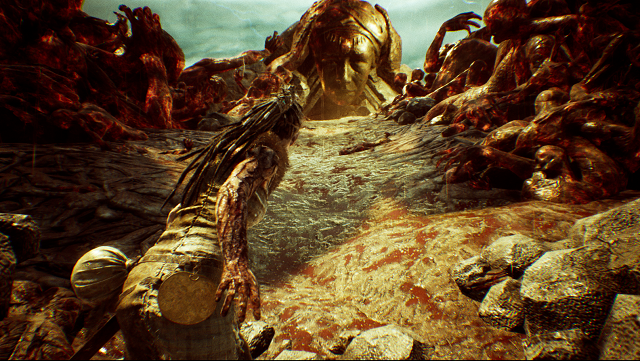
The story of Hellblade follows a woman named Senua, who is seeking to be reunited with her love, Dillion. Senua must face her psychosis in this Norse-inspired world as she embarks on a journey into Helheim to reclaim her beloved’s soul.
Senua herself was interesting, and I found myself wondering how she got to this point. I was invested early on and wanted to know more of her backstory. We get a lot of that through her thoughts and the voices in her head, as well as the flashback scenes that punctuate the game at various points.
Like I mentioned above, Senua’s voices are a great addition to the game that actually helped quite a bit during puzzles and combat. They tell you to focus so you know when there is something important around. They often tell you to evade or watch behind you during combat. And they give hints during puzzles if you pay attention. But they also constantly disagree with each other, so you have to know when to listen to them, and when to ignore their useless prattling.
The sort of direction these voices provide feels more natural and subtle than quest instructions or NPCs. These voices are another prime example of the natural flow this game follows while you move through it.
Puzzles
Not many games give me a great sense of accomplishment when I get through a puzzle, but this is one of them. Most of the puzzles Senua encounters aren’t really that difficult — but with no direction of what to do, completing them successfully is far more fulfilling than it would be otherwise.
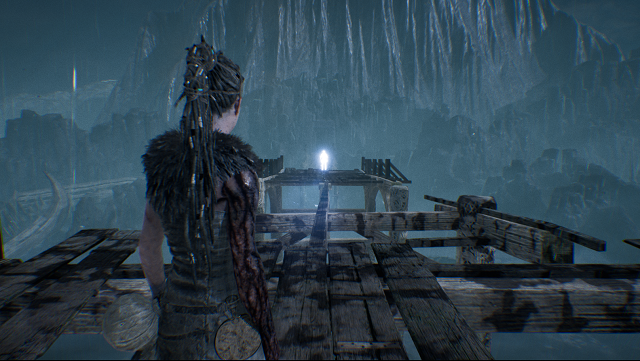
What’s Not So Great
Hellblade: Senua’s Sacrifice can be challenging for sure, which is a big plus in most cases. But the fact that you must figure things out on your own is a blessing and a curse, as it can lead to frustration in more difficult areas of the map or harder combat situations.
My biggest frustration is with the balancing sections of the game. For the longest time I had so much difficulty with these areas, and I died many times trying to complete them. I found out that it’s much easier if you strafe instead of trying to move the mouse around, but I still had problems getting through some of the bridge areas. This is something that others may not have much of an issue with, but I can see some players quitting out of sheer frustration over these parts.
“Permadeath”
Hellblade: Senua’s Sacrifice boasted a “permadeath” feature that interested a lot of people. The game uses a rot system that starts on your right hand, then slowly creeps up your arm with each death. During your tutorial, you’re told after your first battle that if you fail enough times, the rot will take over once it reaches her head and your progress will be lost.
But in spite of the hubbub made about permanent death, it’s unclear if this is actually a thing — or if the game is just trying to scare you. I died many times, mostly from the aforementioned balancing sections, and never saw the rot move past my shoulder.
It might be that not all deaths count (or count as much) toward the rot, which I was grateful for. But players who were expecting this to be an unforgiving mechanic will be disappointed. Personally, I think the rot should only spread if you die during combat.
So until someone can confirm one way or another, we can’t be certain whether this threat of permadeath is real. It could be an intentional design on the developer’s part intended to toy with your mind even further.
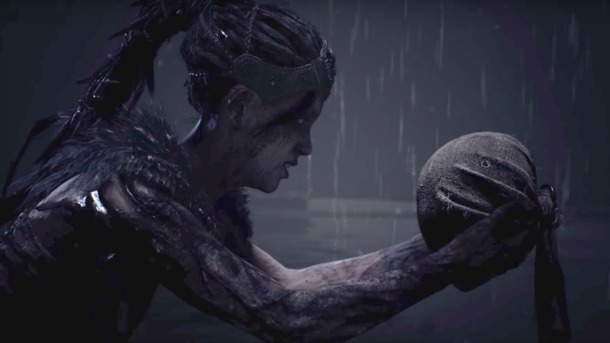
PC Control Options
Let me preface this by saying that the actual controls for PC are fine, and you can customize the buttons how you want. I just wish I could have used my controller while playing PC.
Since the game is also on PS4, it would have been nice if this game had controller support on PC — which most other games offer these day. I would have had a much easier time using a controller, but this is simply a matter of personal preference I wish the devs had chosen to offer support for.
EDIT: Steam does offer controller support, but the game does not on its own.
Verdict
Hellblade: Senua’s Sacrifice is a unique game that intriguingly captures mental illness and offers a punishing-yet-fluid set of mechanics, all wrapped inside a compelling journey through a vibrant world. I felt like I was with Senua every step of the way, and couldn’t wait to see what was around the next corner.
The occasional frustration and lack of a real permadeath feature could put off some players, but this is definitely one to try out. If you’re interested in picking it up to experience Senua’s journey through madness yourself, then you can pick up the game for $29.99 on GOG.
[Note: A copy of the game was provided to the writer for the purpose of this review.]

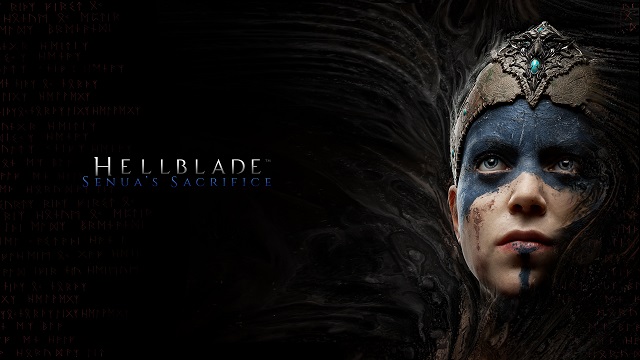








Published: Aug 9, 2017 10:37 am